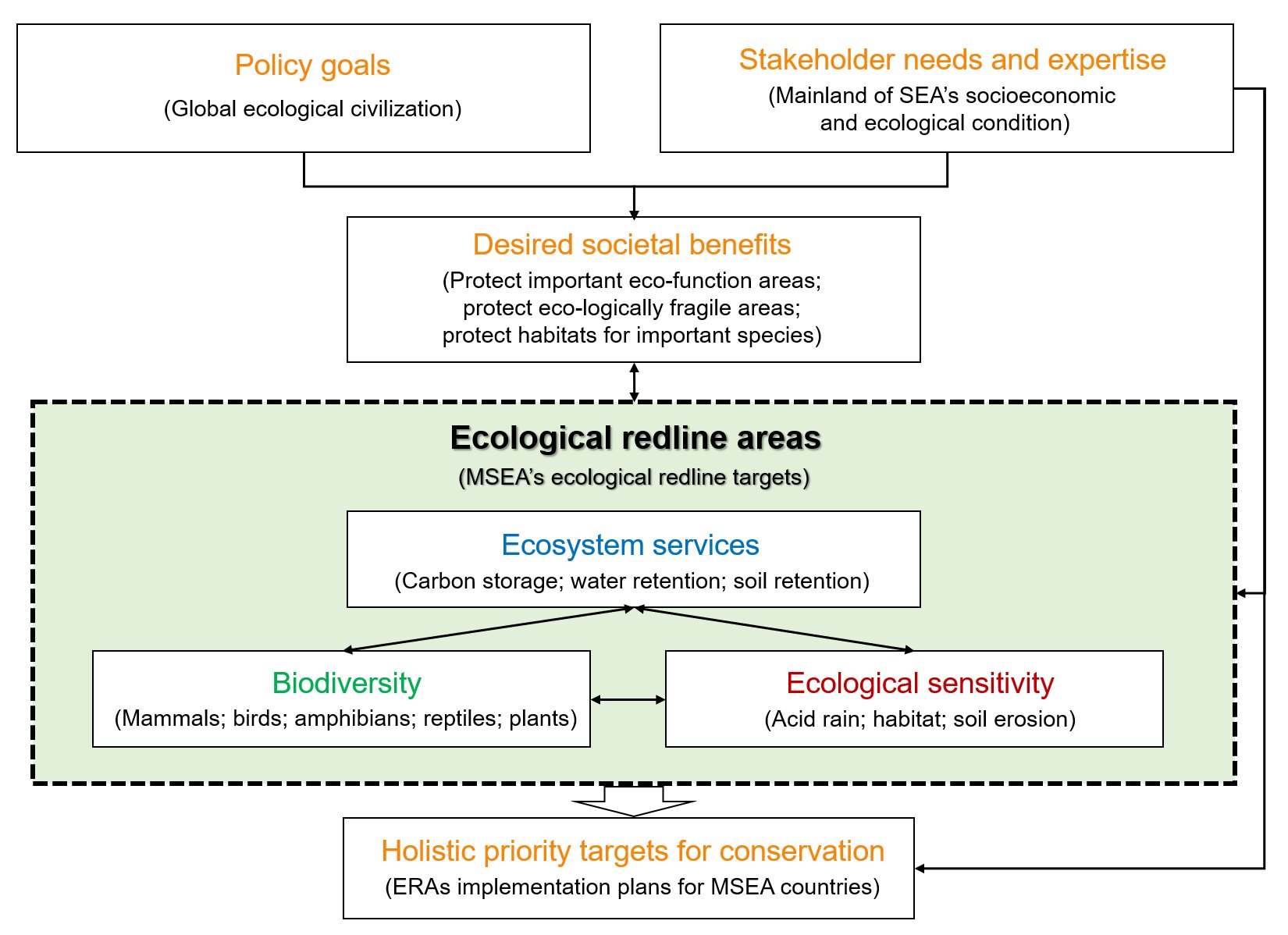With the upcoming launch of the post-2020 global biodiversity framework, identification of conservation targets is essential. However, current global conservation targets focus on biodiversity conservation, ignoring ecosystem services and vulnerabilities.
In a recent study published in One Earth, researchers from the Xishuangbanna Tropical Botanical Garden (XTBG) of the Chinese Academy of Sciences and their collaborators have put forward a framework that combines ecosystem services, ecological sensitivity, and biodiversity indicators (involving 10,311 species) to determine ecological priorities across Mainland Southeast Asia (M-SEA), by using China's ecological conservation redline as a basis.
China has implemented an ecological redline policy (ERP) to safeguard biodiversity and natural resources based on a number of different provisions, with the ecological conservation redline forming a major component. The process of drawing up ecological conservation red lines has basically been completed nationwide. Such lines will be used to identify the country's crucial ecological zones and to enforce strict protection in those areas.
The researchers evaluated the representativeness and gaps in the existing protection networks and ecological redline areas within M-SEA that have been targeted for transnational cooperation.
They selected a total of 11 indicators, comprising indicators of diversity (mammals, birds, amphibians, reptiles, and plants), sensitivity (acid rain, habitat, and soil erosion), and service provision (water retention, carbon storage, and soil retention), based on M-SEA’s role as a global biodiversity hotspot and the needs of regional stakeholders. These stakeholders included participants in key economic sectors and government departments, both of which provide key ecosystem services.
The results show that the workload faced by M-SEA countries varies, and that some countries have very few priorities protected.
The results further suggest that ecological redline areas (ERAs) should be implemented in three tiers based on the level of co-benefits (i.e., additional biodiversity benefits above an agreed-upon baseline) among all the 11 indicators provided.
Since the hotspots of diversity, sensitivity and services overlap each other in space, the priority is to protect areas where the three types of hotspots overlap, followed by areas where there are two types of hotspots. In tier one, areas with more than three indicators of overlapping hotspots (16% of the entire territory of M-SEA) are protected. In tier two, areas with two or more indicators of overlapping hotspots (33%) are protected. Tier three protects all remaining non-overlapping hotspots (51%).
“We propose that the protection goals should be that 16% of the entire territory of M-SEA put priority on all three areas (ecosystem services, biodiversity and ecological sensitivity) at the first stage, and 33% of the entire territory of M-SEA at the second stage, and 51% of the entire territory of M-SEA on the rest of the hotspots at the third stage. This could provide targets for the 2030 mission and 2050 vision,” said Dr. BAI Yang, lead author of the study.
The researchers then proposed that the countries in Mainland Southeast Asia could implement ecological redlines under China's Belt and Road Initiative, to enable a transnational joint focus on ecological protection and the development of green infrastructure.
Contact
BAI Yang Ph.D
Xishuangbanna Tropical Botanical Garden, Chinese Academy of Sciences
E-mail: baiyang@xtbg.ac.cn

Framework of making ecological redline areas. (Image by BAI Yang)

